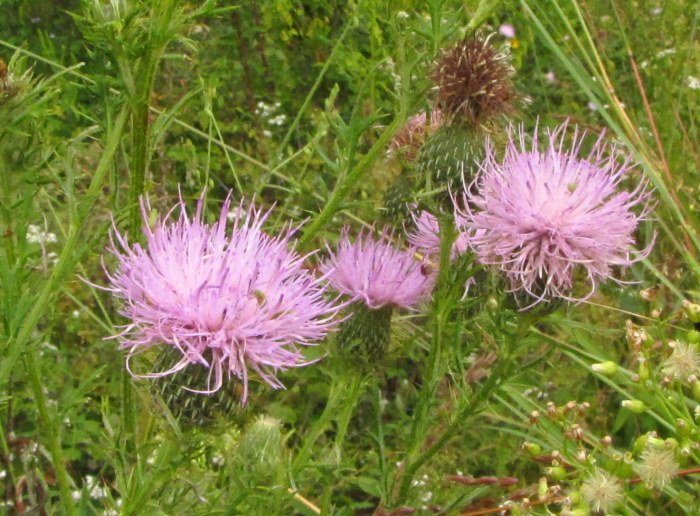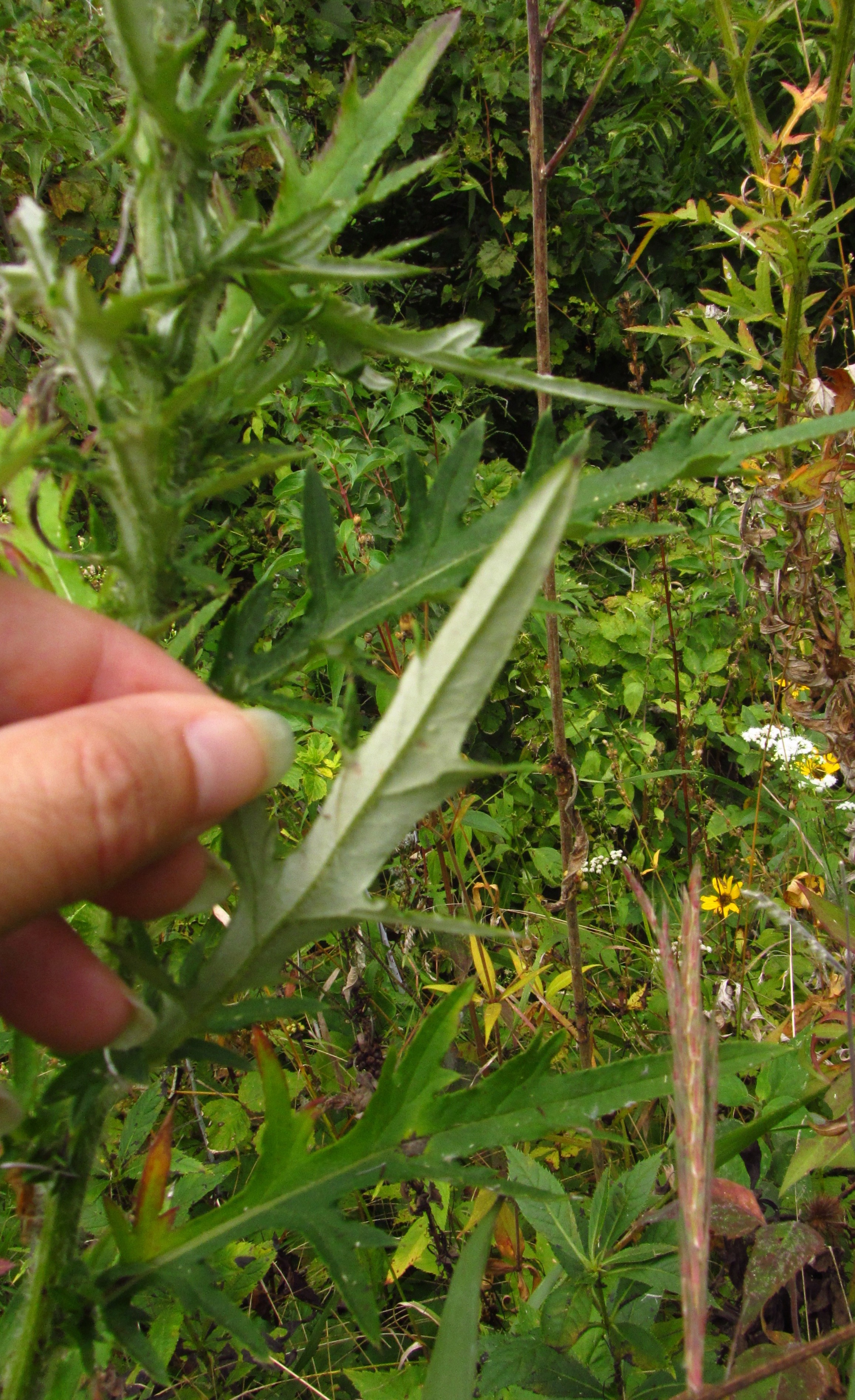Thanks to lead organizer Mike Delaney, I was able to visit Tipton Prairie (west of Rippey on E57 in Greene County) earlier this month. The Raccoon River Watershed Association sponsored a walking tour, with expert guidance from Professor Thomas Rosburg of Drake University.
On my first outing to Tipton two years ago, I saw the four-acre, never-plowed prairie in late spring, when prairie phlox, prairie redroot, and yellow star grass were near their peak. The landscape looks quite different in late summer.
One treat was seeing a large colony of field thistle (Cirsium discolor), also known as pasture thistle. Although this plant is native to most of the U.S. and Canada east of the Rocky Mountains, most thistles growing along Iowa trails and roadsides are invasive species. However, according to the Illinois Wildflowers website, field thistle can thrive on disturbed ground as well as in high-quality habitats. You may find it in “moist to dry prairies, openings in woodland areas, moist meadows near rivers, limestone glades, pastures and abandoned fields, open areas along railroads and roadsides, and waste areas.”
The easiest way to tell whether a thistle is native is to look at the underside of the leaves. In field thistle or the closely related native tall thistle, they should be white. Not so in non-natives such as bull thistle, which otherwise looks similar.
Tom Rosburg explained that the divided leaves on field thistle help distinguish it from tall thistle. In the words of the Minnesota Wildflowers site,
Field Thistle most closely resembles Tall Thistle (Cirsium altissimum), which also has soft needle-like spines on the floral bracts, hairy stems and white on the underside of leaves. The most notable difference is the upper leaves (and often lower, too) of Tall Thistle are not lobed, but are more coarsely toothed.
The next two shots show the hairy stems and divided leaves.
As with other thistles, each flowerhead contains numerous disk florets. Flowerheads are about to open in this picture.
Many plants will have flowerheads in all stages of development: opening, in full flower, and gone to seed.
A wide variety of insects pollinate field thistle or feed on its foliage. Tiny bugs were crawling all over the flowerheads around midday.
We saw lots of bees on these plants too.
A grasshopper perched on field thistle let me get surprisingly close.
The reddish grasses visible in that picture are Indian grass. This shot provides a better view of them.













1 Comment
A great choice of subject, because there is good thistle news in Iowa!
The Iowa noxious weed law has been almost impossible to change over the past few decades, even though the law in its current form is, to put it gently, really awful. (And no one knows that better than Iowa weed professionals.) The political reasons why that law is so hard to change aren’t hard to figure out.
But now word is slowly spreading among conservationists that native thistles have finally been removed, at least in some sense, via administrative rule, from the state noxious weed list. That includes the three native thistle species that were on both the noxious weed list and also on the state endangered, threatened, and special-concern list. (See what I mean about the weed law being awful?)
This was able to happen mostly because of the recent arrival in Iowa of Palmer amaranth, a new and hugely-dreaded weed for rowcrop farmers. It’s complicated.
But the short version is that those of us who have been secretly sheltering native thistles on our property, because they are beautiful and belong here and are so loved by so many kinds of small wildlife, are more “legal” now. Which is good, because if we Iowans want to help monarchs, goldfinches, bumblebees, and a number of other small beings that are in peril because of human activities, we should welcome more populations of blooming native thistles.
PrairieFan Thu 19 Sep 1:28 AM